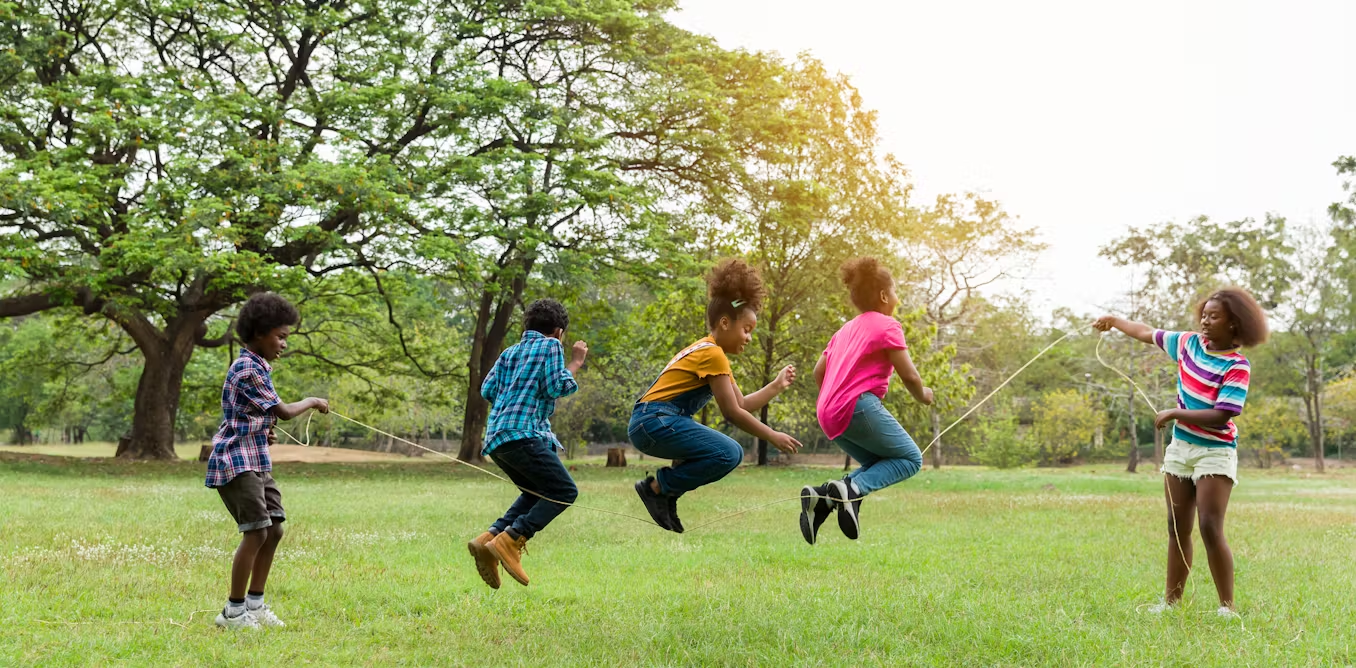In this modern age of ubiquitous screens, it’s more important than ever to make sure kids get enough exercise. You can’t say enough good things about exercise, especially considering that the number of overweight and obese children is increasing. With kids spending more time indoors and staring at computers, it’s more important than ever for them to be purposefully active.
Age-based training guidelines
Preschoolers (3 to 5 years old)
Preschoolers are full of energy, are always on the move and discovering their world. Play activities are not only fun for them but are also important for their growth. Activities such as running, jumping, climbing and dancing can improve coordination, balance and flexibility. They should be able to play hide and seek in the garden or dance to their favorite music. The point is to keep them going.
School children (6 to 12 years old)
As children get older and go to school, structured hobbies and sports become even more important. Football, basketball, swimming and martial arts are all organized sports that are good for the body and teach important life skills such as discipline, teamwork and adaptability. Allowing children to discover things they enjoy can help them get active and stay healthy.
Benefits of exercise for children
Benefits for the body
Regular exercise as a child lays the foundation for a healthy life as an adult. It makes muscles and bones stronger, improves circulatory health and improves motor skills. Every movement they make contributes to their physical development, from improving hand-eye coordination during sports to developing their gross motor skills through active play.
Mental health benefits
In addition to exercise being good for the body, exercise is also good for the mind. It reduces worry and anxiety, makes you feel better and makes your brain work better. Endorphins are often called the ‘feel good’ hormones because they make people feel good. Being active makes children feel happier and more energetic.
Problems and solutions
Physical activity versus time spent on screens
One of the hardest things about getting kids into sports is that computers are so attractive. Screens, such as smartphones, computers and video games, provide many ways to stay entertained, but often make people less active. To find balance, limit screen time and engage in other activities such as family walks, bike rides, or outdoor games.
Worry about safety
Safety is the most important thing when children play sports. From sports injuries to outdoor injuries, parents should ensure that their children are supervised at all times and that the equipment they use is appropriate for their age and in good working order. Teaching children safety rules and the right way to do things is also a very important part of preventing them from getting hurt.
How to get people more active
set a good example
Children learn by watching adults, so be a good role model. Do something active together as a family, such as playing a game in the park, going for a walk, or just going for a walk after dinner. Making time to exercise can help you develop healthy habits that will last a lifetime.
Have fun and talk to people.
The exercise should not be painful. Find something your child enjoys doing and make it fun and engaging for him or her. It’s important to make exercise fun and social, such as joining a sports team, taking dance classes or hanging out with friends.
In summary
In a world full of screens and sedentary lives, it is more important than ever to make exercise a priority for children. We can give children the tools they need to live healthy, active lives, give them age-appropriate tasks, highlight the physical and mental benefits, tackle problems and give them advice on how to stay motivated .
1. How much exercise does a child need daily?
Children should try to be active for at least an hour every day. This can be done several times a day.
2. What are some fun ways for kids to exercise indoors?
Some indoor activities that can be used for exercise include yoga, dance, indoor obstacle courses, and even active video games to get you moving.
3. What can I do to get my child moving?
Help your child choose something he likes, involve him in decision-making, set goals for him to achieve, and give him praise and positive reinforcement for his efforts.




